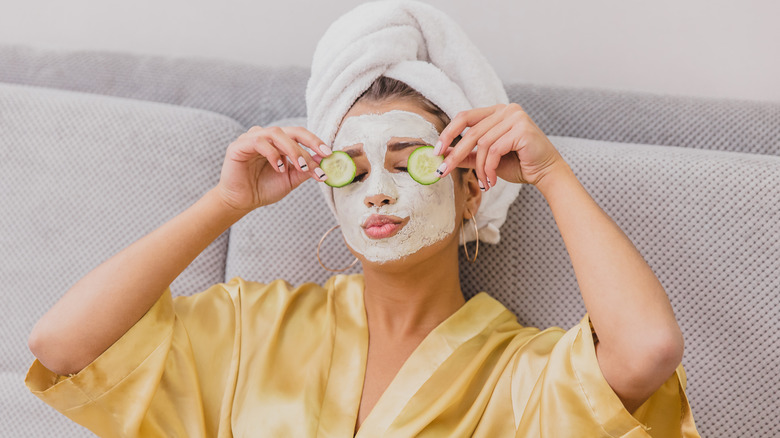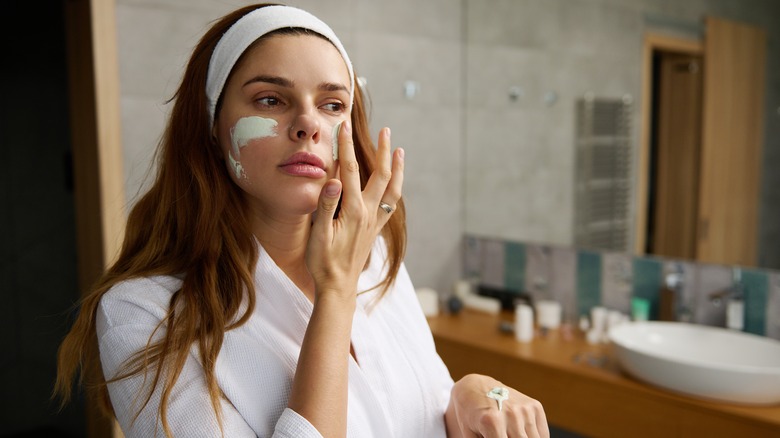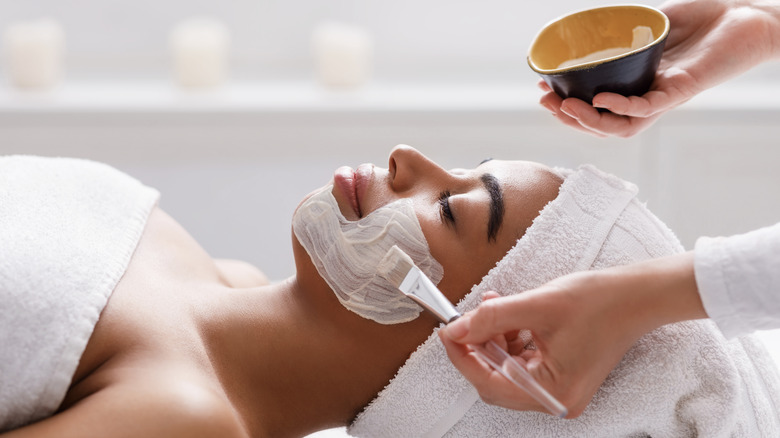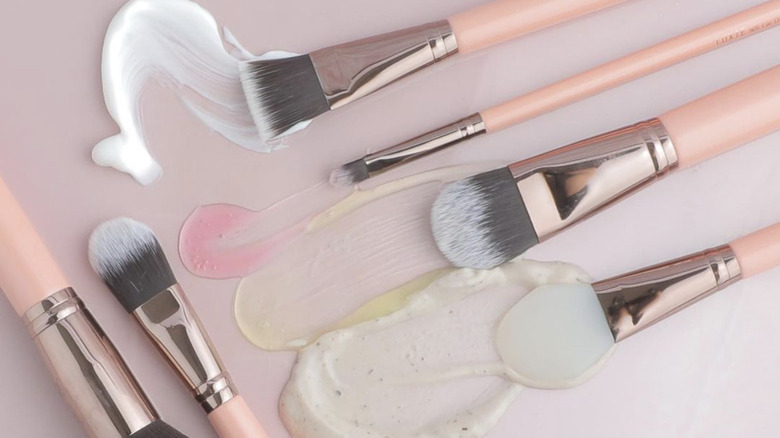The Sanitary Reason To Use A Brush To Apply Your Face Masks
We may receive a commission on purchases made from links.
When you think of face masks (the skincare ones, not the surgical ones), we bet you think of spa days, relaxation, cucumber-over-the-eyes type of luxury. Because masks are a luxury. They're an indulgence, a present to yourself. Masks are the cherry on top of the sundae that is skincare. And when you do get to use a mask for that extra something special that the rest of your skincare can't take care of, you want to make that experience the best it can be. You want to enhance the effects of your usual skincare efforts, not dampen their glow.
And let us tell you, the way you apply your masks has everything to do with whether they will make or break your skincare routine. All that hard work can either pay off or crumble with a mask. So, the next time you use a mask, make sure to apply it correctly. Because they don't spread bacteria, clean brushes are the best, most sanitary way to apply your face masks.
Why not just use your hands?
Applying skincare of any kind with your hands is a risk. It is no secret that hands harbor all kinds of bacteria. After all, we do most tasks with our hands and touch many things throughout the day, so washing your hands before touching your face and before doing your morning and nighttime skincare routines is crucial to healthy, clear skin. But is it enough to just wash your hands before touching your face? According to Image Skincare, hand-washing doesn't completely eliminate bacteria, which can impact your skin and lessen the benefits of the mask.
While it is common to perform all steps of your skincare routine with just your fingers, using tools to apply products to the face is always the best option to completely avoid bacteria spread. We also suggest that you invest in exfoliating brushes or sponges for cleanser, spatulas for moisturizers (especially ones that come in a pot to scoop out), and even eye creams that come with applicators that you can wipe clean.
Benefits of using a brush
Using a brush to apply your mask — be it clay masks, gel masks, or cream masks— is always beneficial, and the reasons go beyond the cleanliness factor.
Opting for a brush is better for spreading the product evenly, which allows the benefits of the mask to work on the entire face in equal measure. The bristles of a brush dispense the product properly and even reach into individual pores. Silicon brushes, though bristle-free, are also great at getting into hard-to-reach areas of the face, with the added benefit of being easy to clean. Using your hands won't give you as much access to areas that are easy to miss.
Because brushes are more effective at spreading the product quicker and more evenly than your hands, they save you time when applying your skin masks. This means that you can make the most of your relaxation session while you let masking do its magic.
Types of brushes to use for each mask
Many brands have come out with brushes specifically made for face mask application, which makes for a convenient shopping experience. While you can use regular makeup brushes for your masks, provided their shape allows the spreading of the product, it is best to look for brushes made specifically for mask application.
The type of brush you select will depend on the type of mask you'll be using it for. If the product is a clay mask, a flat brush with bristles is best. The Herbivore Botanicals Mask Applicator Brush has a flat shape and works great for spreading product, while its bristles get in all the crevices to allow the mask to do its job and cleanse every pore. On the other hand, if the mask you're applying is more of a gel-like or creamy consistency, a silicone brush will do the trick. The Florence by Mills Silicone Face Mask Brush is ideal for spreading the product evenly all around the face, not a drop wasted.



